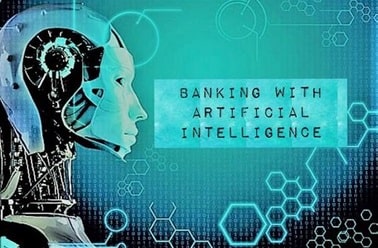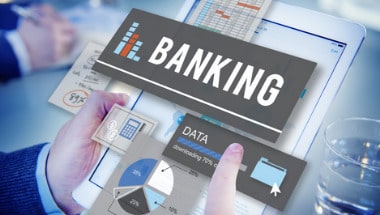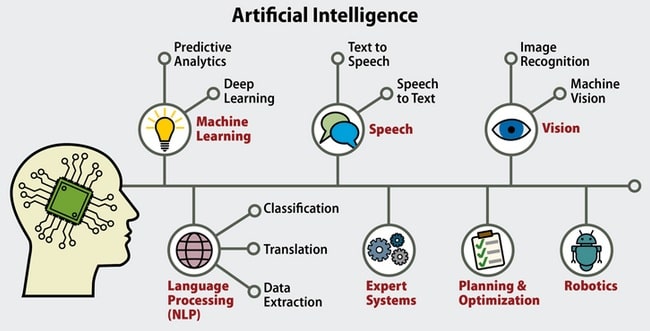Financial services firms are using AI to create smart trading platforms and identify client needs

This article appears in the February 2021 issue of Investment Executive. Subscribe to the print edition, read the digital edition or read the articles online.
Technology is everywhere in the financial services industry, and banks have been building their artificial intelligence (AI) bona fides in recent years.
Components of AI include natural-language processing, which uses technology to analyze the spoken and written language, and machine learning, which uses algorithms to analyze and learn from large amounts of data.
Since 2016, Royal Bank of Canada (RBC) has focused on AI through its dedicated research division called Borealis AI. In October 2020, Borealis AI and RBC announced the launch of Aiden, an AI-driven electronic trading platform for institutional investors.
Aiden uses “reinforcement learning,” a form of AI based on behavioural psychology that either rewards or penalizes an algorithm when it makes a decision. This is the same type of machine learning used for AlphaGo, a Google-owned computer program that beat a human player at Go, a sophisticated board game, in 2016.
But making trading decisions in a live market is more complicated than playing a board game, noted Foteini Agrafioti, chief science officer at RBC and head of Borealis AI. “It’s a much more complex environment where we were able to deploy [Aiden] and we’re extremely happy with the results,” she said.
Traditional electronic trading programs are designed to follow specific rules in certain market conditions and must be reprogrammed when they encounter new scenarios — which leads to downtime. Aiden, on the other hand, is dynamic: it can adapt to changing market conditions, Agrafioti said.
Still, Aiden is not completely autonomous. As with other AI platforms, humans can overrule Aiden’s investment decisions when necessary. But before that happens, Aiden has a chance to explain its rationale to a human supervisor — a crucial feature for an AI platform.
“For every trade [Aiden] makes, it also justifies why it just did that,” Agrafioti said. “And that gives people confidence and trust that they understand the context of the algorithm they’re seeing.”
Banks also are using AI to leverage one of their most valuable resources: client data. These data may include emails sent to an advisor, financial transactions and the number of times a client has signed in to an online account.
In 2020, Bank of Nova Scotia announced the creation of a global AI platform that uses client data to help identify client needs.
During the first wave of Covid-19, Scotiabank used its AI capabilities to identify clients who were at risk financially as a result of the pandemic. The bank then contacted those people to offer potential solutions — something Scotiabank intends to do again in the future.
“We will continue to focus on providing applicable unique solutions for our customers and being able to tailor those solutions to customer needs,” said Phil Thomas, executive vice-president, customer insights, data and analytics, with Scotiabank.
As Scotiabank and other companies continue to harness customer data, critics wonder how AI platforms use that data, leading to growing demand for “ethical” AI.
“When it comes to banking, there are a number of areas that are very important when applying AI ethically, starting with privacy,” Agrafioti said. “[Privacy] is part of the obligation that we have as a business.”
To be ethical, Agrafioti said, an AI platform must be robust and able to act consistently and fend off would-be hackers. AI platforms should be tested frequently for bias. Biased algorithms can lead to repeated errors or give preference to one group or outcome over another.
“These systems are only as good as the data [they use],” Agrafioti said. “If the data for some reason is biased because of the way it’s been collected [or] the processes that were followed, then AI is prone to detecting that and perpetuating that bias.”
Another part of using AI ethically is ensuring clients and employees understand how information is gathered and used.
For example, if AI gleans insight from client communications such as emails or phone calls, the client should understand that, said Matthew Bogart, vice-president of marketing with Toronto-based NexJ Systems Inc., which uses AI to create “intelligent customer-management products.”
To implement AI platforms effectively, financial services firms have a few steps to follow. First, the AI strategy must be coherent across all business channels, said Mukul Ahuja, financial services and insurance industry leader with Deloitte LLP’s Omnia AI practice. Doing so will help executives ensure each development in AI aligns with corporate strategy before dedicating resources to the project.
Having a deep talent pool also is helpful. Scotiabank plans to draw on the expertise of its Toronto team to build out the bank’s AI platform across all of its business channels globally.
“Toronto has really become a hotbed for talent in the AI industry,” said Thomas, adding that the ability “to build once and then to deploy in many different circumstances” is a “competitive differentiator for the bank.”
Uses for AI
Artificial intelligence (AI) appears in many forms throughout the financial services industry, from personal finance apps to trading algorithms. As well, cases in which AI can be used continue to increase as the industry evolves, with the technology supporting rather than upending the advisor-client experience.
Chatbots, for example, remain a rudimentary tool, said Foteini Agrafioti, chief science officer and head of Borealis AI at Royal Bank of Canada. While chatbots can handle basic communication, they’re still a long way from truly being able to interact like a human, Agrafioti said.
AI is useful in the onboarding process too. AI can “auto-fill” information and streamline the number of questions a client has to answer, said Yair Weisblum, partner in PricewaterhouseCoopers LLP’s financial services practice.
AI also is good at repetitive tasks, making it excellent for reducing costs. For example, AI can be used to automate billing for an advisor, said Mukul Ahuja, financial services and insurance industry leader with Deloitte LLP’s Omnia AI practice.
“[Automating billing by AI] manages a reduction in manual errors, greater efficiency and also reduces risk — and that frees up advisors to spend more time with clients,” said Ahuja.
AI has real potential to use client data to create tailored recommendations and communications. AdvisorStream, a marketing platform for advisors, is using AI technology from Toronto-based NexJ Systems Inc. to create news communications customized for clients.
Article: How banks are harnessing artificial intelligence


